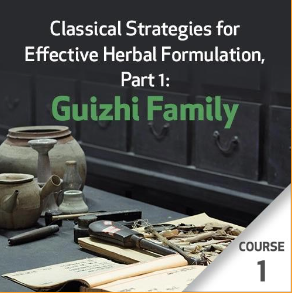We use cookies to make your experience better. To comply with the new e-Privacy directive, we need to ask for your consent to set the cookies. Learn more.
Classical Strategies for Effective Herbal Formulation, Part 1: Guizhi Family - Course 1
£57.50
SKU
14-C-HF010
*Discounted price for logged-in JCM subscribers only:
£54.63
Dr. Fruehauf's master class opens with a discussion of classical principles, including Qi and Wei, medicinal terroir, alchemical stability, directional momentum, and the science of paozhi processing. Guizhi Tang is introduced, with case examples.
Course Overview
Dr. Heiner Fruehauf's master class on Chinese herbal medicine deepens the lifelong learner’s mastery of herbal prescribing by rooting their understanding in classical principles and practices. It accommodates the needs and interests of all levels, from students of Chinese medicine and newer practitioners to seasoned practitioners who are ever-refining their capacity to successfully treat any condition presented in the clinic. For each of eight major herb families, Heiner describes the energetic properties of the lead herb, common herb pairs, and the major herbal formulas. Case examples are presented to provide a clinical context for learning the indications for particular formulas within each family. With this base of knowledge, practitioners can stand on firm ground while being flexible in their ability to design herbal treatments that effectively treat the complex patterns manifesting in our increasingly out-of-balance world. In this introductory session, Heiner discusses the qi and wei of herbs as characterized in the Huangdi neijing and the Tangye jing, medicinal terroir (didao yaocai), the alchemical stability and directional momentum of Chinese herbs, the architecture of herbal formulas, and the art and science of paozhi (precise processing methods based on classical alchemical instructions). He introduces Tangye jing Group 1 (Phase Element Wood) with the acrid herb Guizhi. Guizhi Tang is introduced as the lead formula in this category; case examples are given.
Course Objectives
- Discuss the qi and wei of Chinese herbs, distinguishing between the wei of an herb as characterized in the Huangdi neijing versus the Tangye jing.
- Discuss the concepts of medicinal terroir (didao yaocai), chemical stability, and directional momentum as they relate to Chinese herbal medicine.
- Discuss the fundamental principles and methods of paozhi (herbal processing based on classical instructions).
- Describe the 4 major roles that herbs play within a Chinese herbal formula, and the major forms in which the formulas as administered.
- Discuss Guizhi Tang as the main representative of the Guizhi family of formulas.
Provider: CPD Cert
Access: Unlimited
| External Website Url | https://www.cpd-cert.com/classical-strategies-for-effective-herbal-formulation-part-1-guizhi-family-course-1.html |
|---|
Write Your Own Review
* Orders shipped outside of Europe are eligible for VAT relief and will not be charged VAT.


